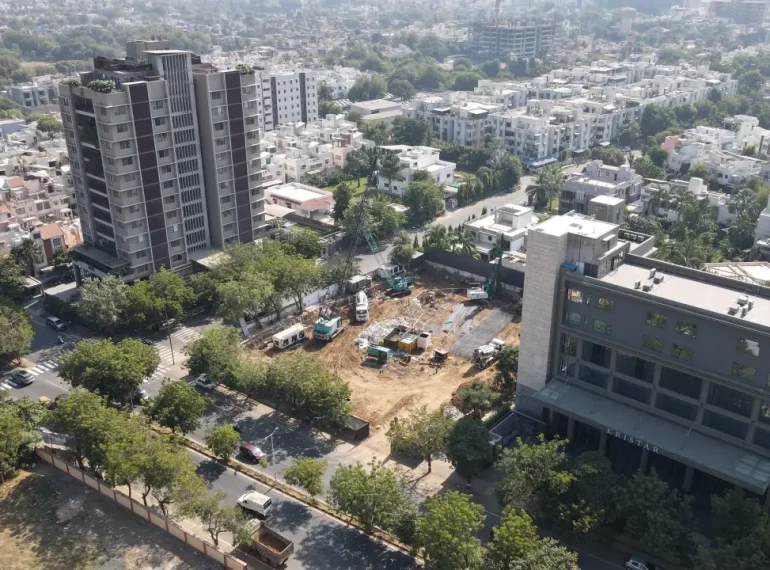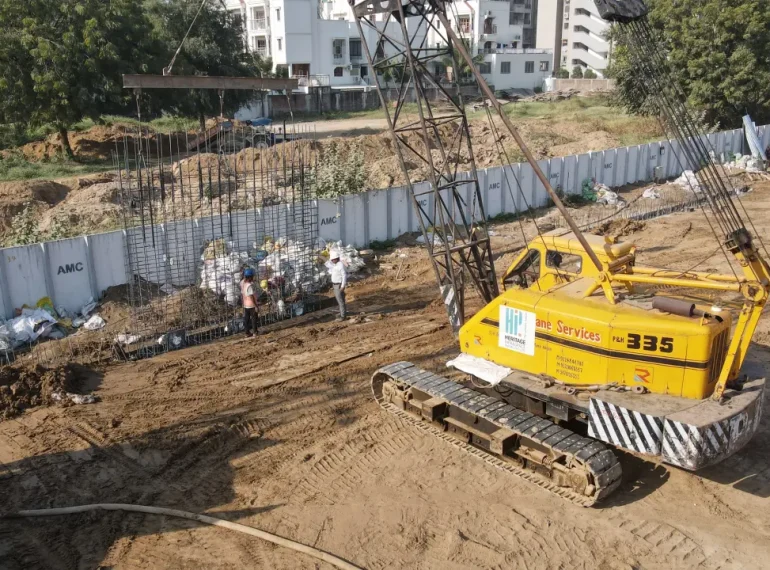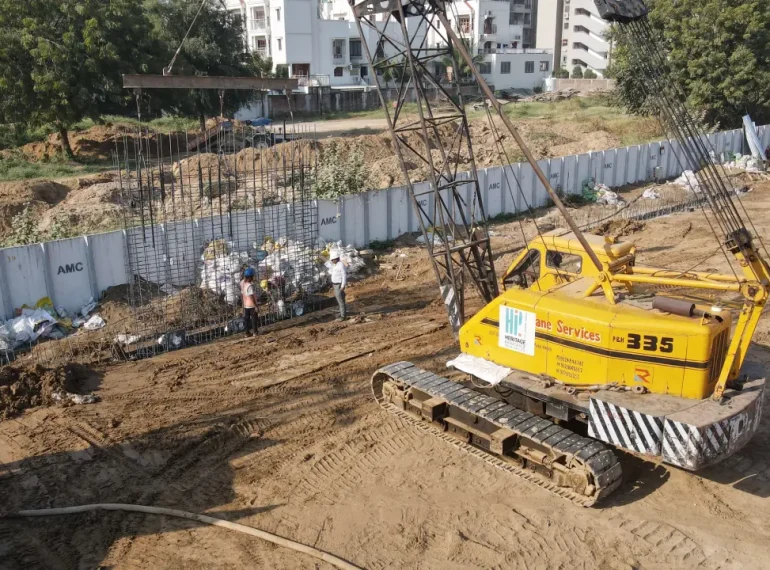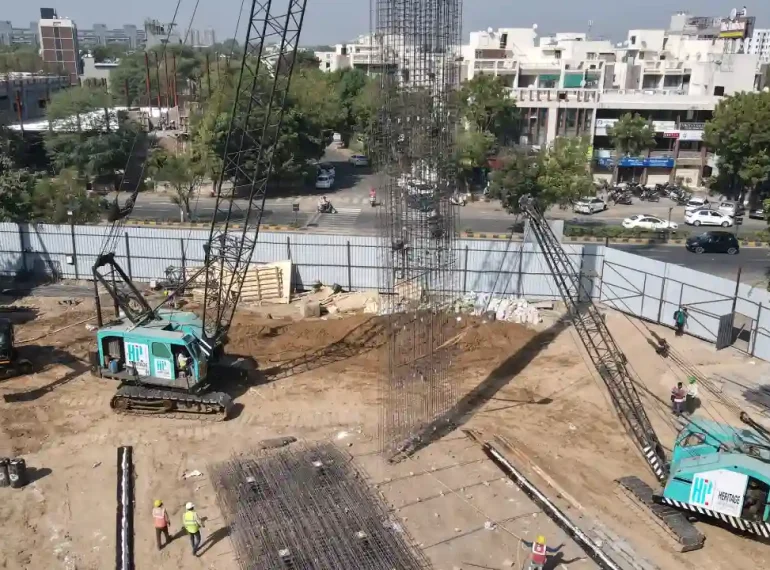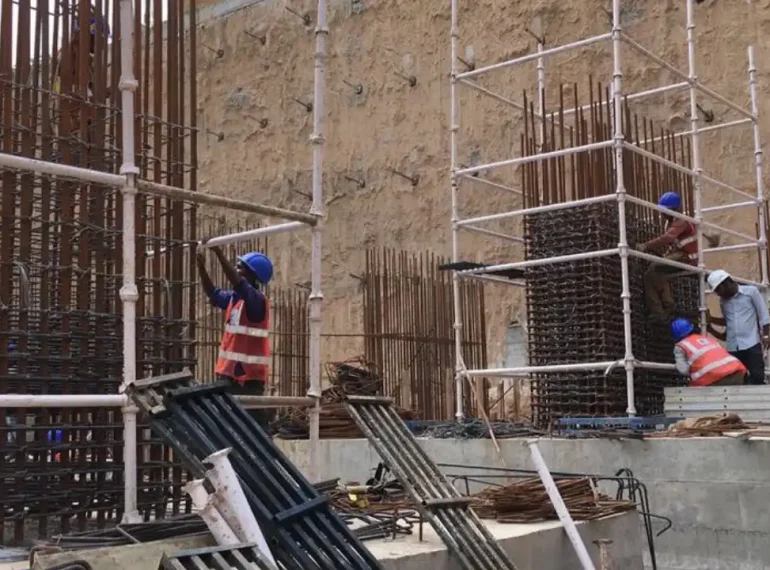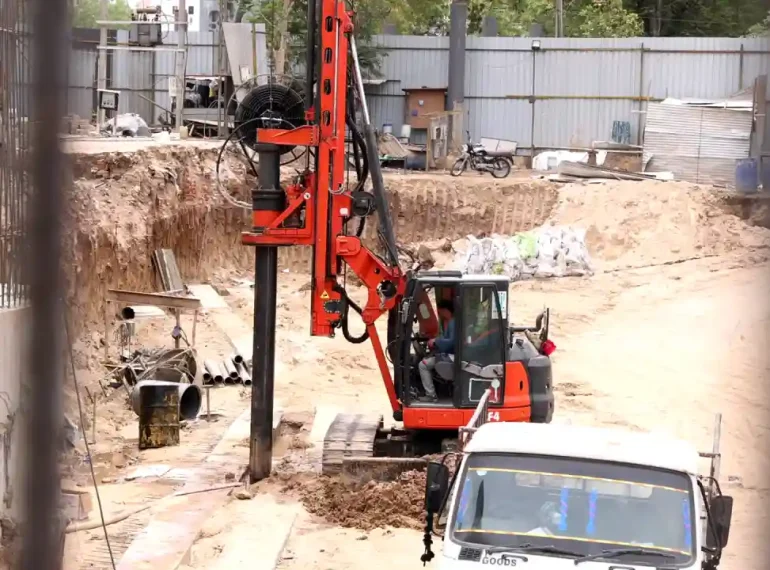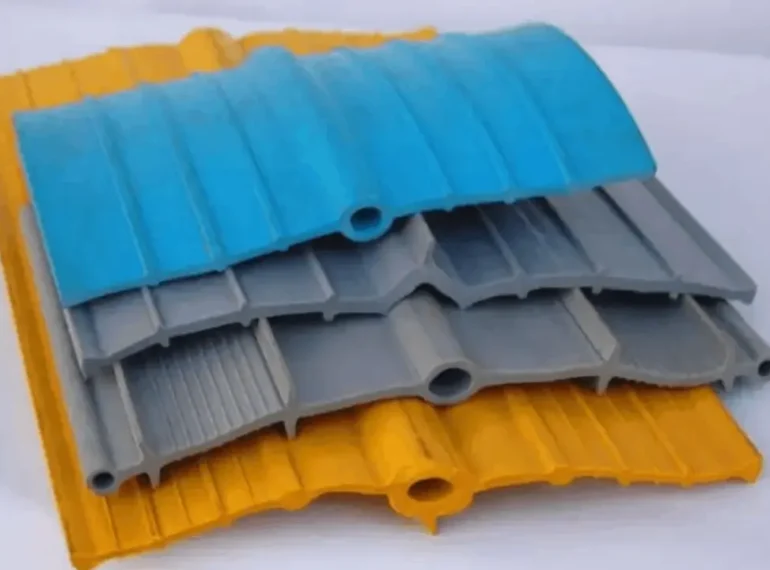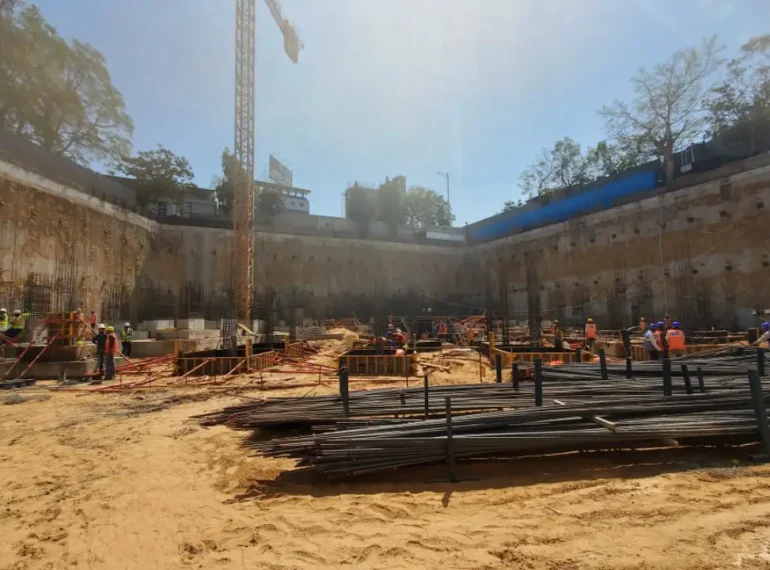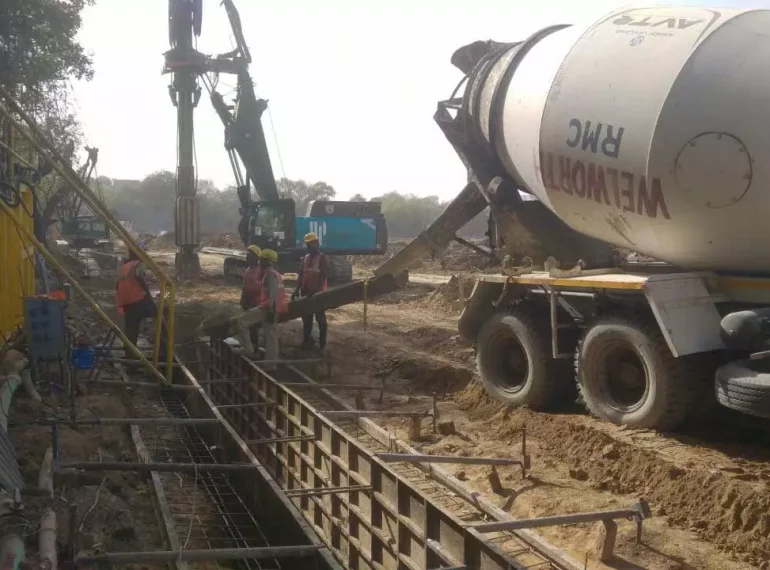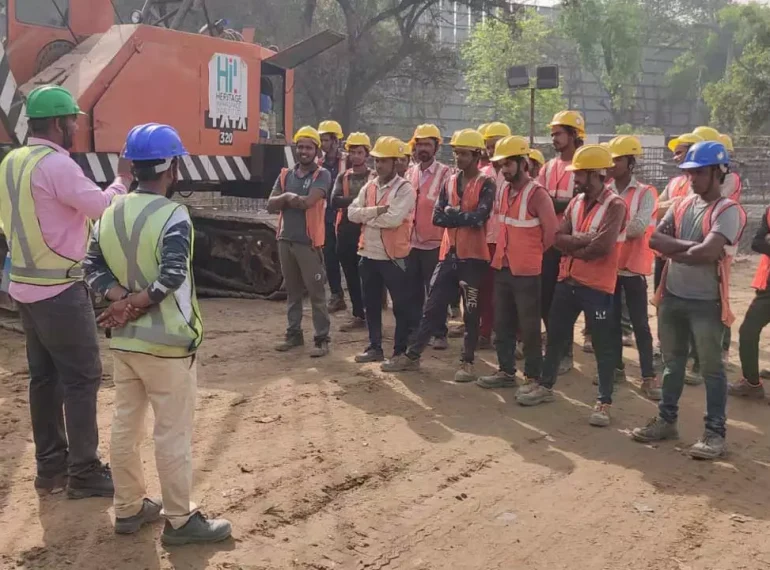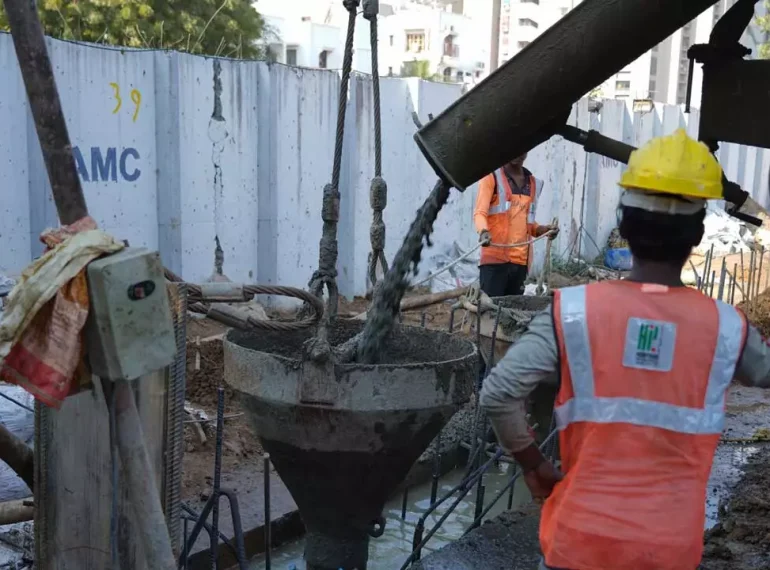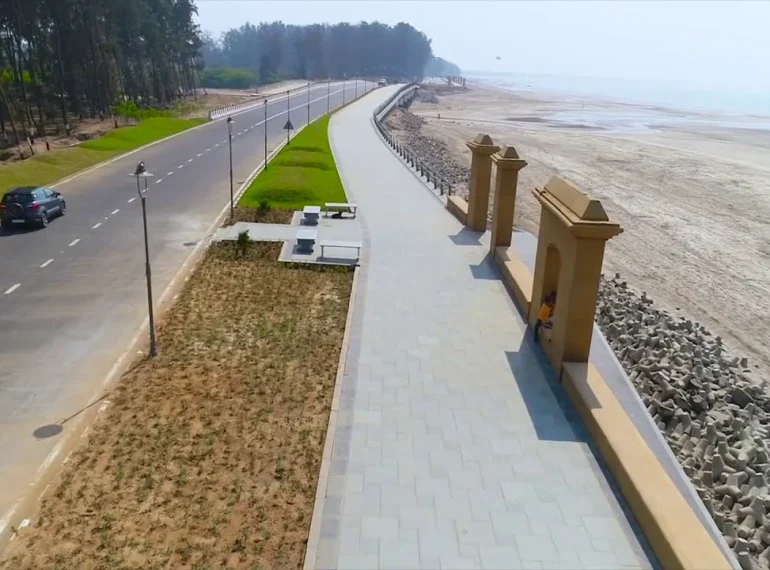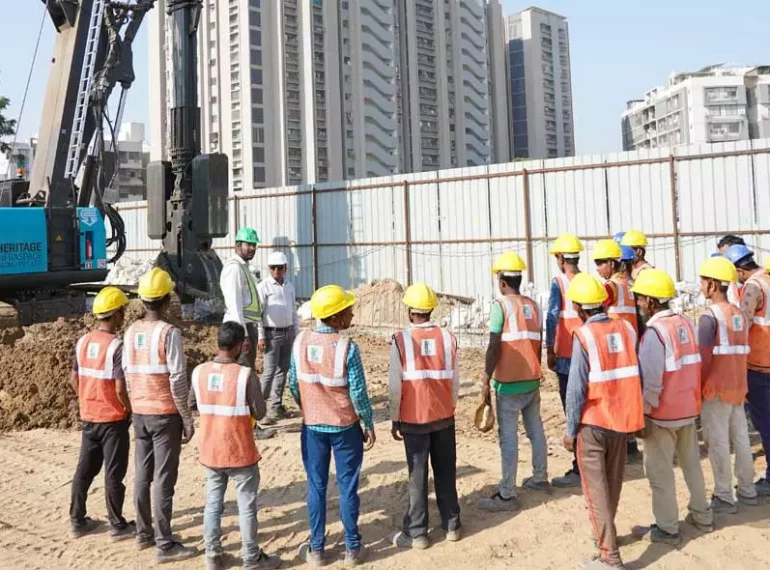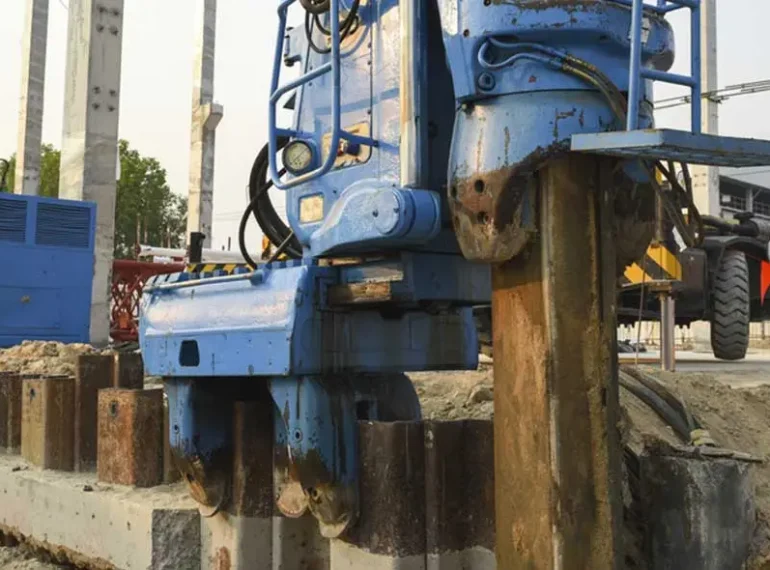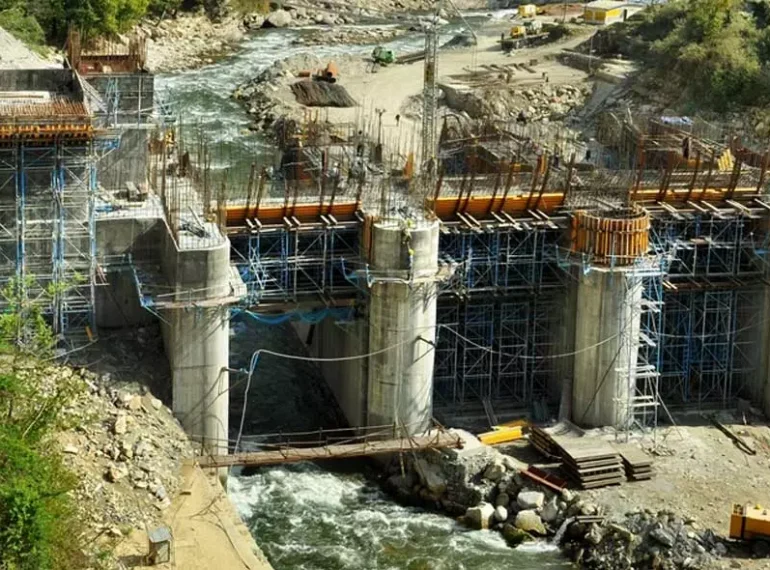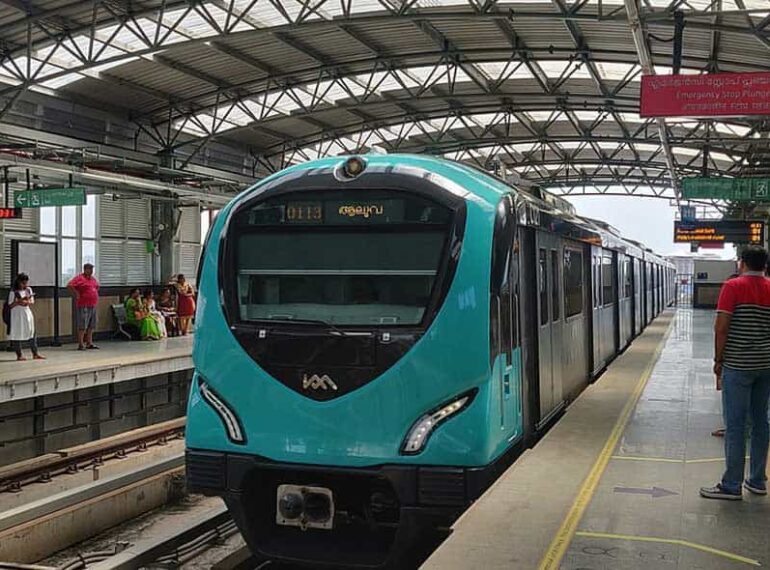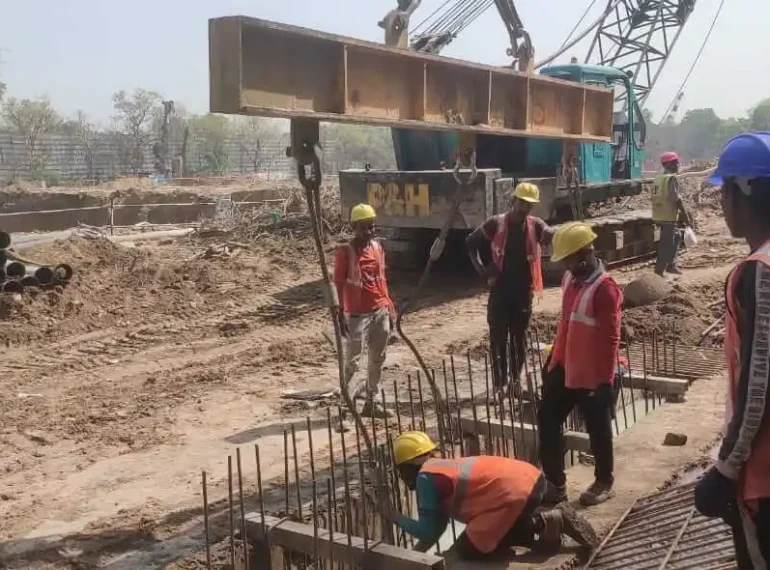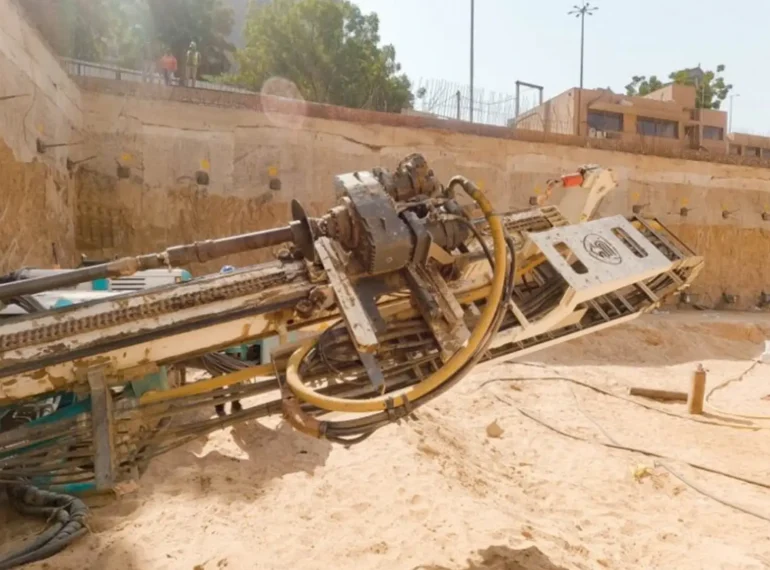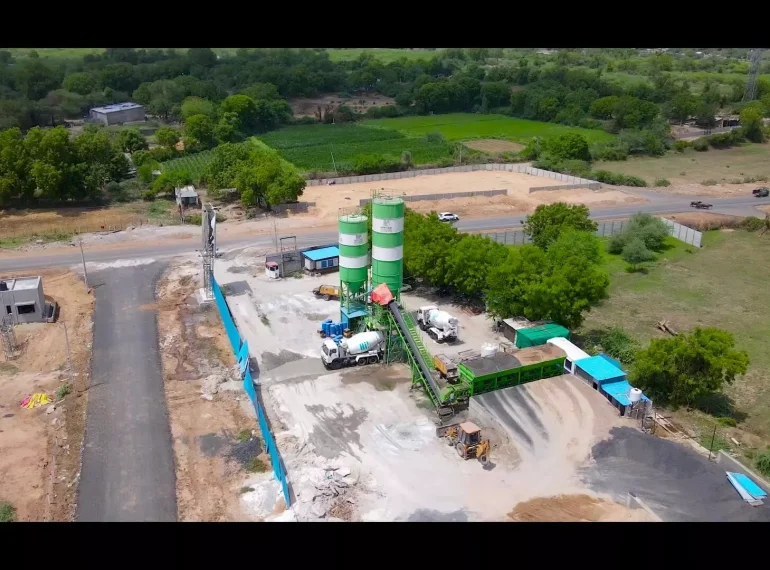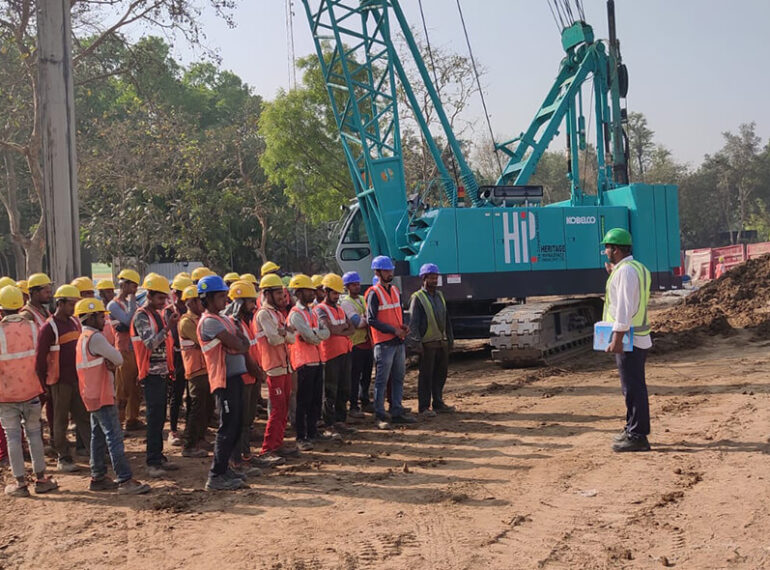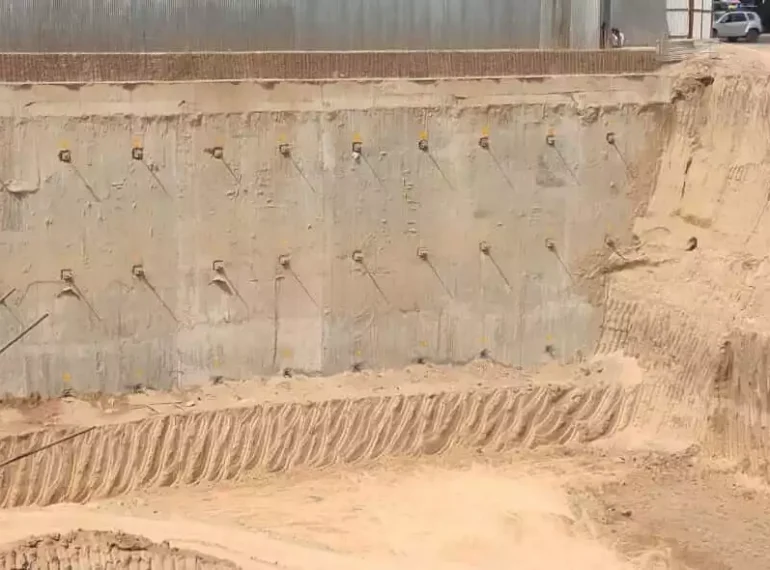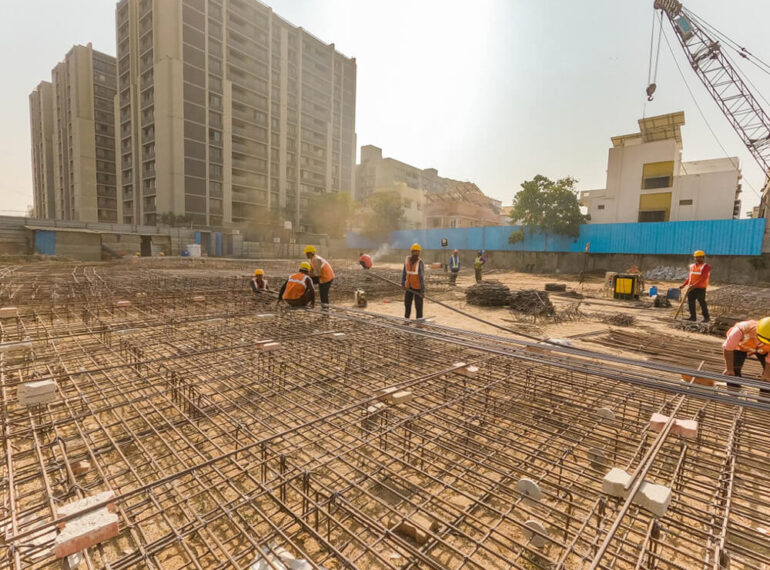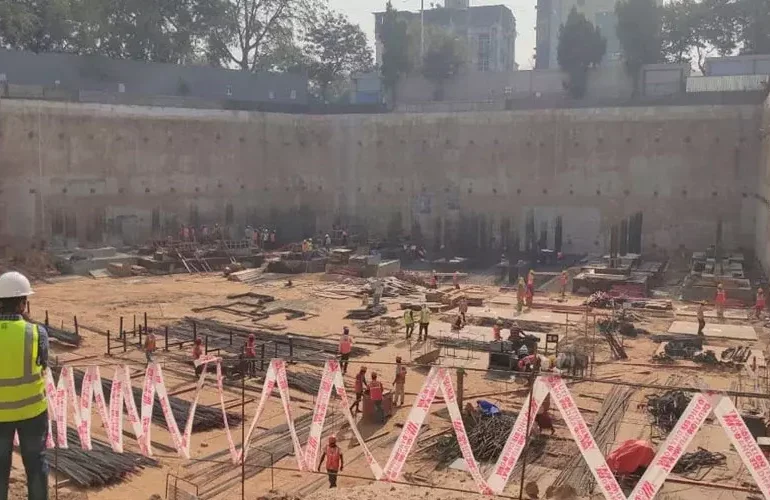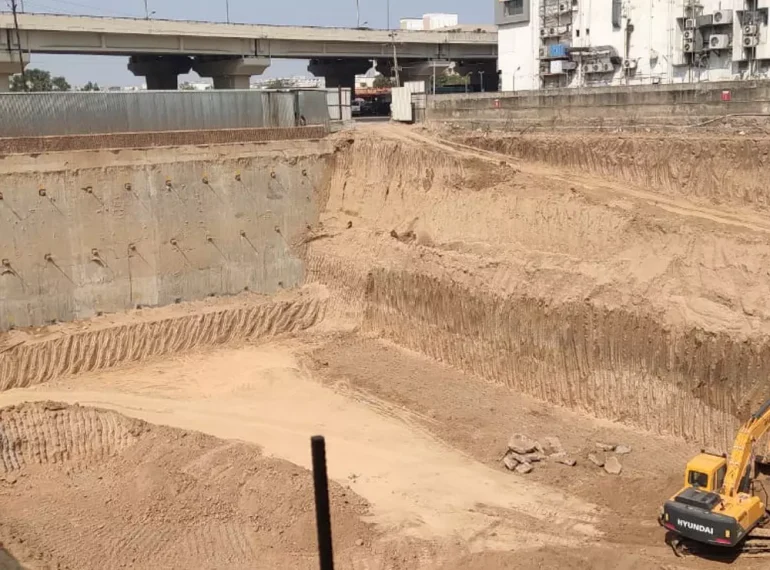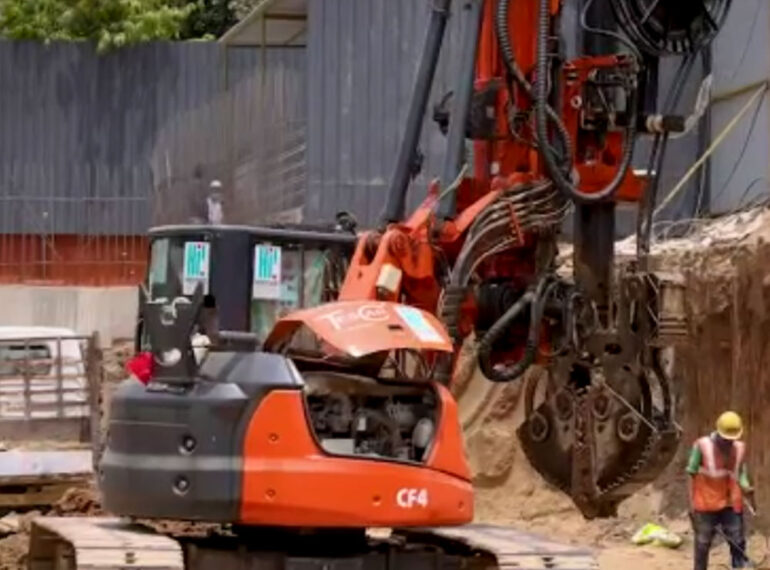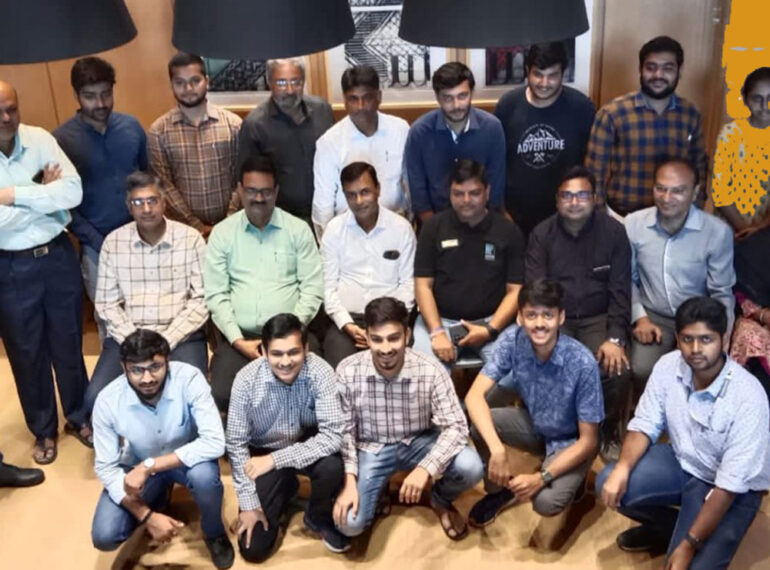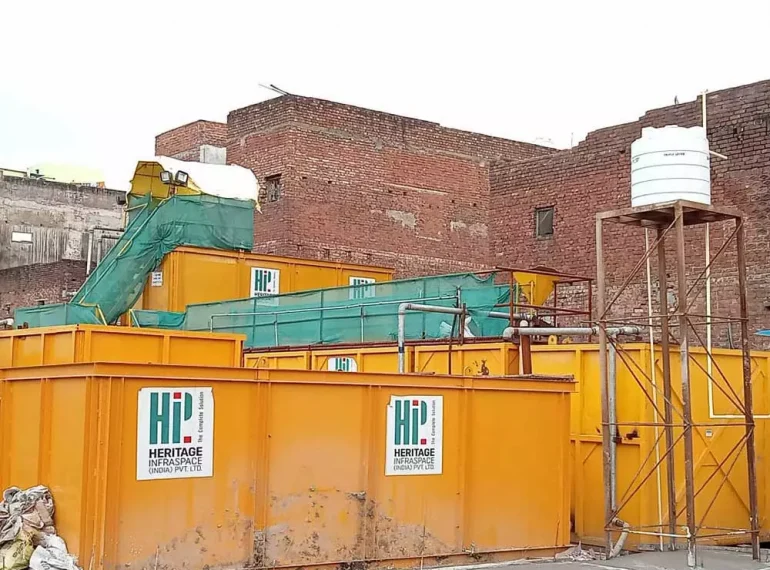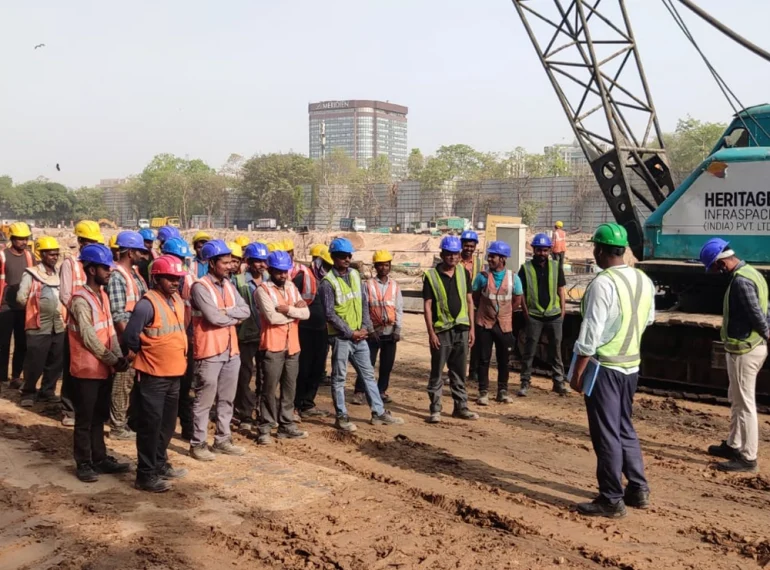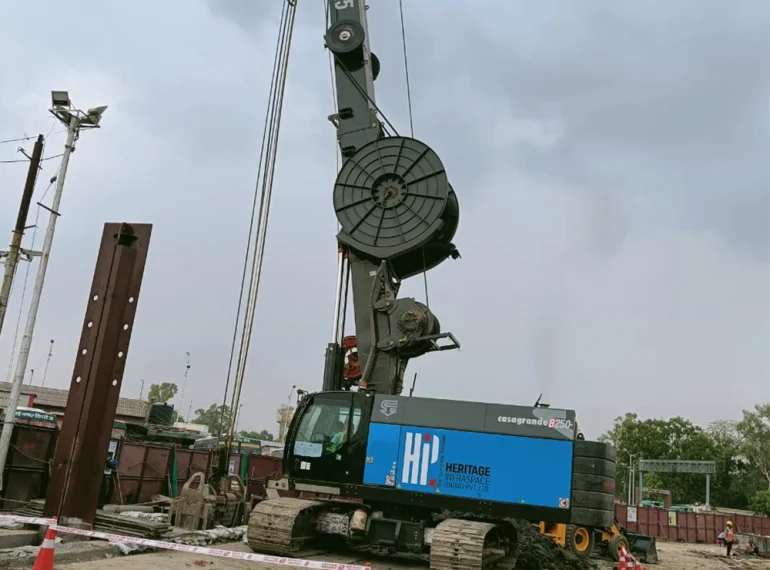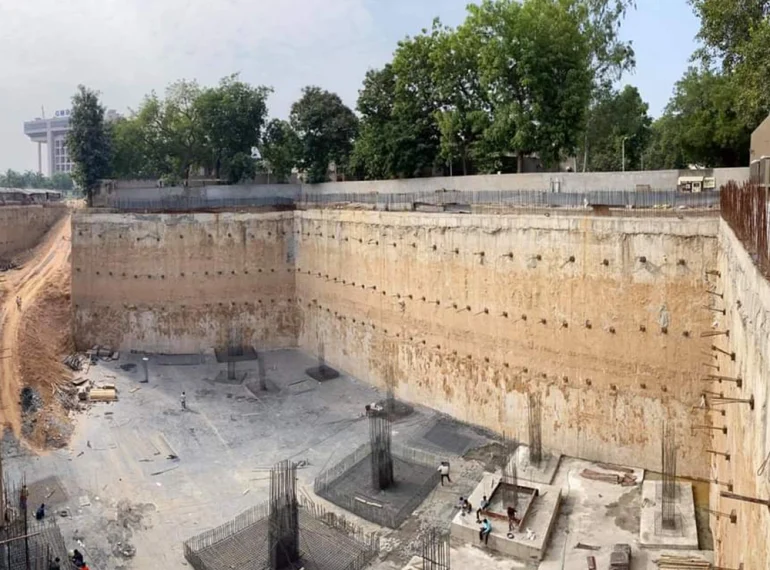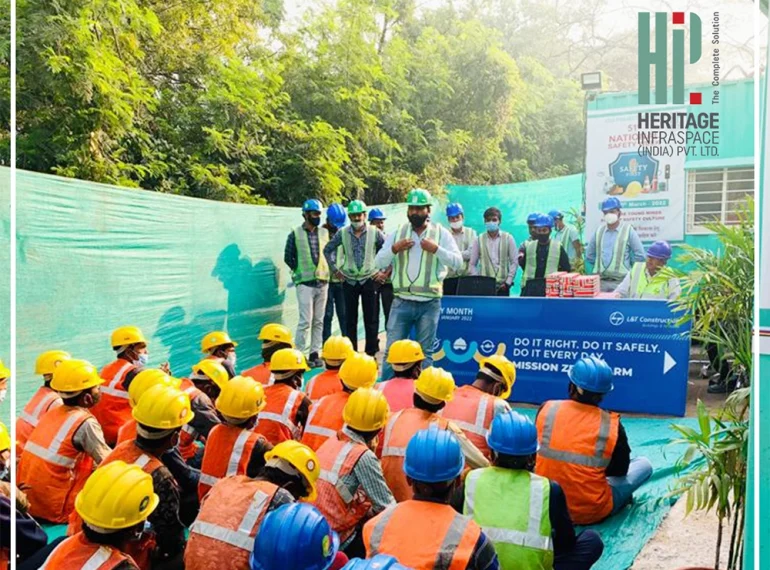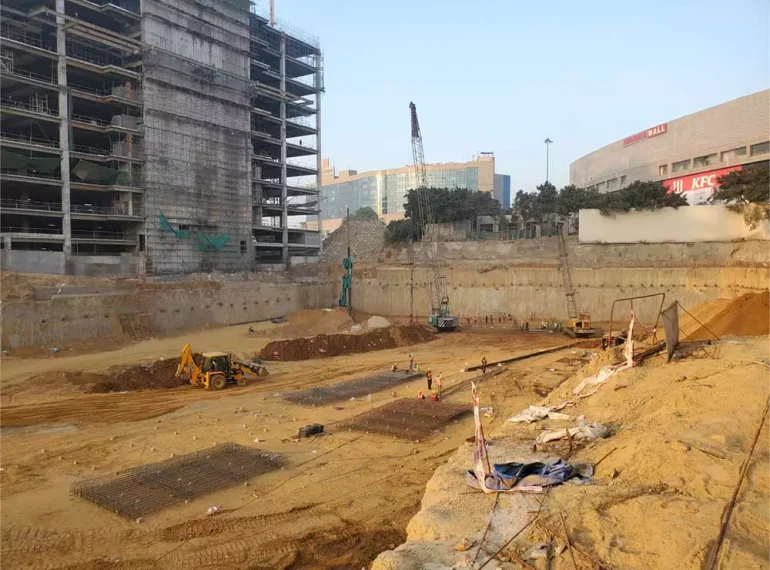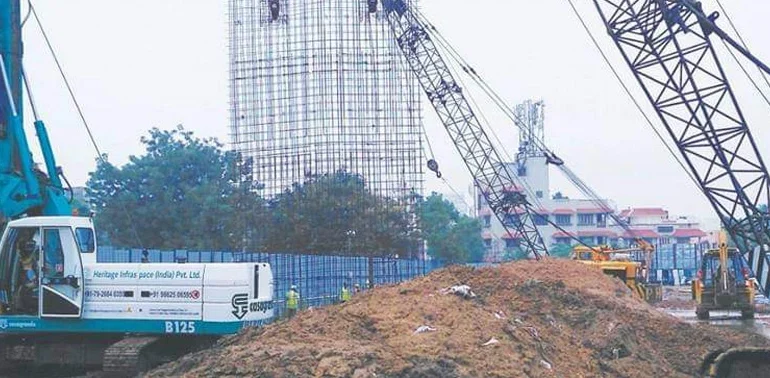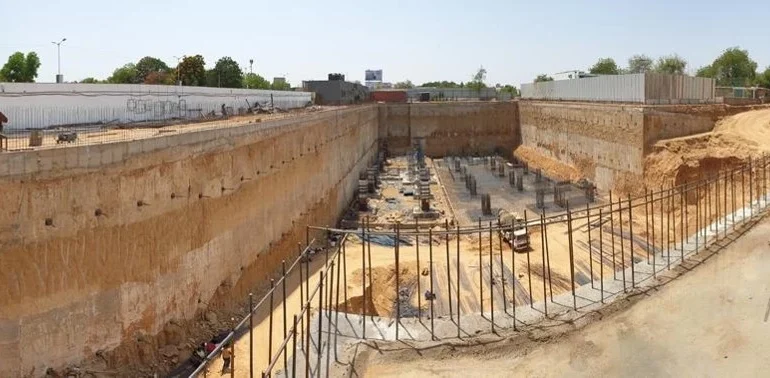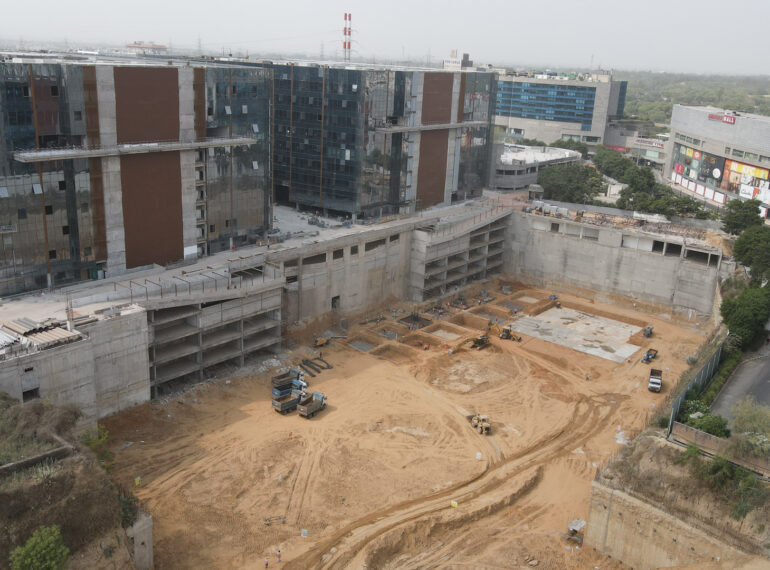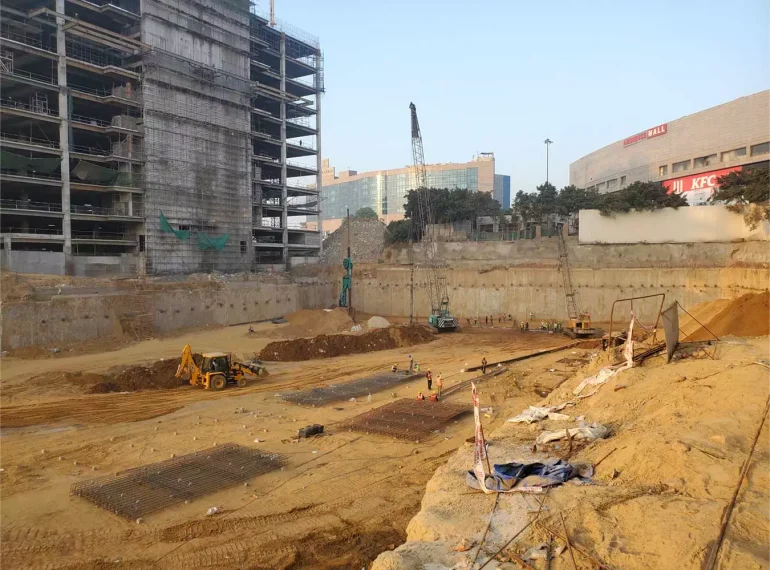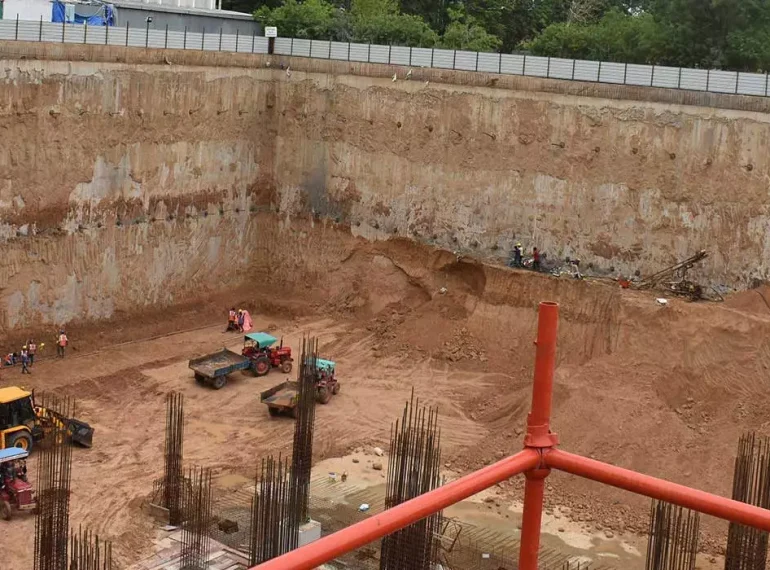Diaphragm wall construction is a technique that involves creating reinforced concrete walls in the ground to support structures such as basements, tunnels and dams. Diaphragm walls are also known as basement diaphragm walls when they are used to form the perimeter of underground spaces. Diaphragm wall construction has undergone significant changes over the years, from the use of conventional equipment such as clamshell grabs and chisels to the adoption of modern equipment such as hydraulic cutters and slurry pumps.
These modern equipment offer several advantages, such as faster and more accurate excavation, better quality and durability of the walls and reduced environmental impact. Here, we will explore the role of modern equipment in d-wall construction and how they have improved the efficiency and safety of this process.
Traditional vs Modern Equipment
One of the main challenges of diaphragm wall construction is to excavate the soil and replace it with concrete without causing any damage to the surrounding structures or the environment. Traditional excavation methods, such as clamshell grabs and chisels, have several limitations, such as low accuracy, high noise and vibration levels and difficulty in handling hard or mixed soils. Moreover, traditional methods require a large working space and a lot of time to complete the excavation and concreting process.
Modern equipment, such as hydraulic cutters and slurry pumps, have revolutionised diaphragm wall construction by overcoming these limitations. Hydraulic cutters can cut through any type of soil with high precision and speed. At the same time, slurry pumps can transport the excavated material and inject the concrete in a continuous and controlled manner. Modern equipment also enables innovative techniques, such as drilling and grouting and top-down construction, which can further enhance the quality and efficiency of diaphragm wall construction.
Modern equipment in action
Let’s look at some of the modern equipment that is used in diaphragm wall construction and how they work.
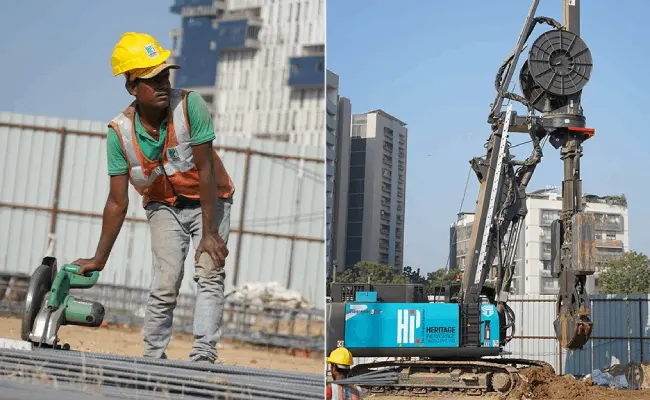
Excavation Grabs
These are devices that are used to dig the soil and create the trench for the diaphragm wall. There are different types of excavation grabs, such as.
Hydraulic Grabs: These are powered by hydraulic cylinders and can operate in various soil conditions. They have a high load capacity and can be controlled remotely.
Mechanical Grabs: These are operated by cables and pulleys and are suitable for soft to medium soils. They have a lower load capacity and require manual intervention.
Cutterhead Grabs: These are equipped with rotating cutting wheels that can break through hard or mixed soils. They have a high cutting efficiency and can be adjusted to different trench widths.
Hydromills: These are special types of cutter head grabs that use high-pressure water jets to cut and loosen the soil. They can also mix the soil with bentonite slurry to form a stable trench.
Kelly KRC2 HD: This is a hydraulic grab that has a double rotary system that allows it to rotate in both directions. It can also be equipped with a casing oscillator to install steel casings in the trench.
KHD System: This is a system that combines a hydraulic grab and a diaphragm wall grab in one unit. It can perform both excavation and concreting operations in a single pass.
KHD Hydraulic Grab: This is a hydraulic grab that has a special design that allows it to place concrete in the trench without removing the grab. It can also be used to install stop-end pipes and water stoppers.
FD Hydromills: These are hydromills that have a modular design that allows them to be assembled and disassembled on-site. They can also be configured to different trench dimensions and depths.
Trench Support Systems
These are systems that are used to prevent the collapse of the trench and the inflow of groundwater during the excavation and concreting process. There are two main types of trench support systems, such as
Slurry Handling System: This is a system that uses bentonite slurry to fill the trench and create a hydrostatic pressure that balances the earth and water pressure. The slurry is circulated and filtered by pumps and tanks to maintain its properties and quality.
Stop-End Pipes: These are steel pipes that are inserted at the ends of the trench to seal the gap between the adjacent panels. They are removed after the concrete has set and the d-wall is formed.
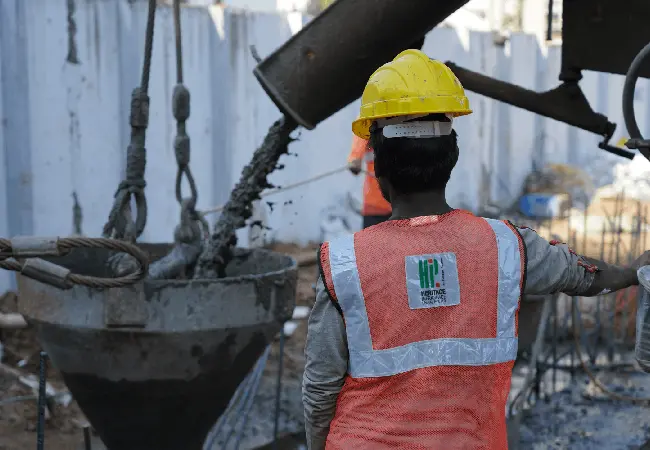
Concrete Placement Equipment
These are equipment that are used to transport and place the concrete in the trench to form the diaphragm wall. There are two main types of concrete placement equipment, such as
Tremie Pipes: These are steel pipes that are lowered into the trench and connected to a hopper that feeds the concrete. The concrete is discharged from the bottom of the pipe and displaces the slurry upwards. The pipe is raised gradually as the concrete fills the trench.
Underwater Concrete Placing System: This is a system that uses a special nozzle that can inject the concrete under the slurry level. The nozzle is attached to a flexible hose that can be moved along the trench. The system can also monitor the concrete level and flow rate.
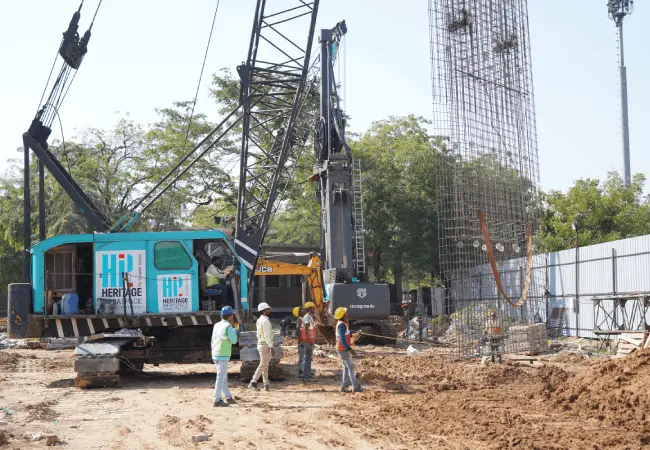
Some additional equipment
These are equipment that are used to perform other tasks related to diaphragm wall construction, such as
Guide Walls and Panels: These are structures that are built on the ground to mark the alignment and position of the trench. They also serve as a support for the excavation grabs and the tremie pipes.
Earth Movers: These are vehicles that are used to transport the excavated material and the concrete to and from the site. They include trucks, loaders, dumpers and JCB cranes.
Anchoring rigs: These are machines that are used to install anchors in the diaphragm wall to provide lateral support and stability. Anchors are steel bars or strands that are inserted into drilled holes and grouted in place. They are also known as anchoring in construction.
Water stoppers: Water stoppers in retaining wall are devices that are used to prevent water leakage between the joints of the diaphragm wall panels. They include rubber or PVC strips that are attached to the stop-end pipes or the concrete.
Surveying and Monitoring Systems: These are systems that are used to measure and control the accuracy and quality of the basement diaphragm wall construction. They include lasers, sensors, cameras and software that can collect and analyse data on the trench geometry, soil conditions, concrete properties and wall performance.
Benefits of Modern Equipment
The use of modern equipment in diaphragm wall construction has many benefits, which are as below.
Efficiency boost: Modern equipment can reduce the time and cost of diaphragm wall construction by increasing the productivity and performance of the excavation and concreting operations. They can also enable the use of advanced techniques, such as top-down construction, that can save space and resources.
Safety first: Modern equipment can minimise the risks and hazards for the workers and the public by reducing the noise and vibration levels, improving the stability and security of the trench and preventing water leakage and soil contamination. They can also provide better control and monitoring of the process and the quality of the work.
Quality without compromise: Modern equipment can improve the quality and durability of basement construction by ensuring a precise and uniform excavation, a smooth and continuous concrete placement and a strong and reliable bond between the panels. They can also handle any type of soil and trench depth and width and adapt to the design and specifications of the project.
Eco-conscious construction: Modern equipment can reduce the environmental impact of diaphragm wall construction by minimising the waste and emissions generated by the process, using recycled and renewable materials and preserving the natural and cultural heritage of the site.
To conclude
By using modern equipment, d-wall construction can become a more reliable and effective solution for the future of construction. Diaphragm wall construction is a vital technique for creating underground structures that can withstand the challenges of urban development. However, diaphragm wall construction is not an easy task, and it requires the use of technological innovation that can enhance the efficiency, safety, quality and sustainability of the process. Modern equipment, such as excavation grabs, trench support systems and other concrete placement equipment can offer many benefits, such as saving time and money, minimising risks, building better walls and reducing environmental impact.
Frequently Asked Questions
Diaphragm wall equipment includes the devices and machinery that are used to construct diaphragm walls, which are reinforced concrete walls built in the ground to support structures and enclosures. Diaphragm wall equipment includes excavation grabs, trench support systems, concrete placement equipment and additional equipment.
A retaining wall is a structure that holds back the soil or water from a slope or an excavation. A diaphragm wall is a type of retaining wall that is constructed in situ in deep trench excavations. A diaphragm wall does not require any excavation behind the wall and relies on propping to resist the lateral pressure.
The walls of the diaphragm are panels of reinforced concrete that form the diaphragm wall. The walls of the diaphragm are connected by joints that ensure structural stability and water tightness. The walls of the diaphragm can have different thicknesses and depths, depending on the design and specifications of the project. The walls of the diaphragm can also be reinforced with anchors or props to provide additional support and resistance.




